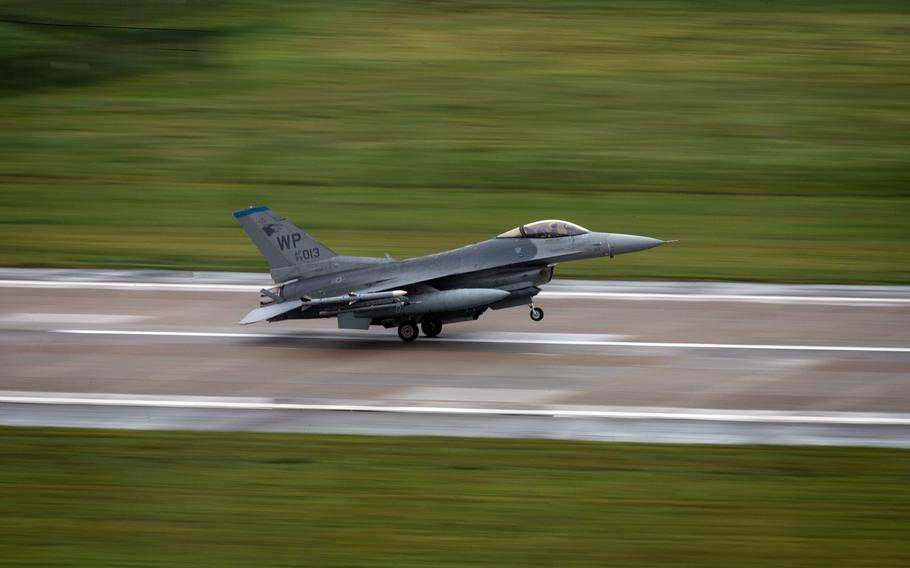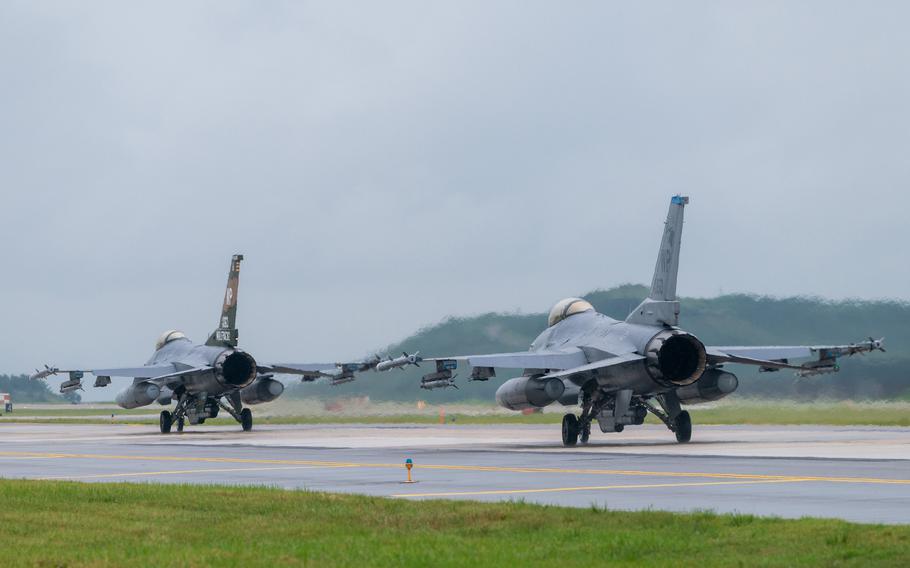
An F-16 Fighting Falcon assigned to the 35th Fighter Squadron lands on the new runway at Kunsan Air Base, South Korea, Aug. 30, 2023. (Jovan Banks/U.S. Air Force)
CAMP HUMPHREYS, South Korea — Military flights at Kunsan Air Base resumed Thursday following a five-month reconstruction of the installation’s 9,000-foot runway.
The $22 million project began in April and required the 8th Fighter Wing’s roughly 30 F-16 Fighting Falcons to temporarily relocate 75 miles north to Osan Air Base in Pyeongtaek city, according to a news release from the wing on Thursday.
Kunsan’s F-16s returned to their home base Wednesday after the flightline was checked for debris the previous day by the wing and the South Korean air force’s 38th Fighter Group.
More than 1,500 concrete slabs were used by the wing and the U.S. Army’s Corps of Engineers - Far East District to replace the deteriorating concrete in the runway makeover, according to a post on the wing’s Facebook page. The U.S. military routinely repairs its runways due to wear and tear from weather exposure and aircraft use.

F-16 Fighting Falcons assigned to the 35th Fighter Squadron taxi on the new runway at Kunsan Air Base, South Korea, Aug. 30, 2023. (Samuel Earick/U.S. Air Force)
Around 4,200 U.S. troops are stationed in Kunsan, about 115 miles south of Seoul on the peninsula’s west coast.
Wing commander Col. Timothy Murphy said the wing’s ability to deter “external threats” and protect “the way of life” in South Korea “will only continue to improve and ultimately strengthen the ironclad [South Korea]- U.S. alliance,” according to the release.
“It’s good to have the Wolf Pack home,” he said.
Flight operations continued throughout the Korean Peninsula as the runway was repaired, wing spokeswoman Capt. Kaylin Hankerson told Stars and Stripes by phone Friday.
In April, F-16s from the wing participated in Korea Flying Training, an annual drill with the South Korean air force at Gwangju Air Base, about 50 miles south of Kunsan.
During an air power demonstration on July 13, four F-16s escorted a U.S. B-52H Stratofortress bomber over the peninsula a day after North Korea fired an intercontinental ballistic missile toward the East Sea, or Sea of Japan.
“The 8th Fighter Wing viewed the runway closure as an opportunity to practice simultaneously operating from numerous locations, to hone our distributed control and mission command procedures … from any location, not just Kunsan Air Base,” Hankerson said.
Although the circumstances for each runway are different, large-scale repair projects historically take place every eight to 10 years, she wrote.